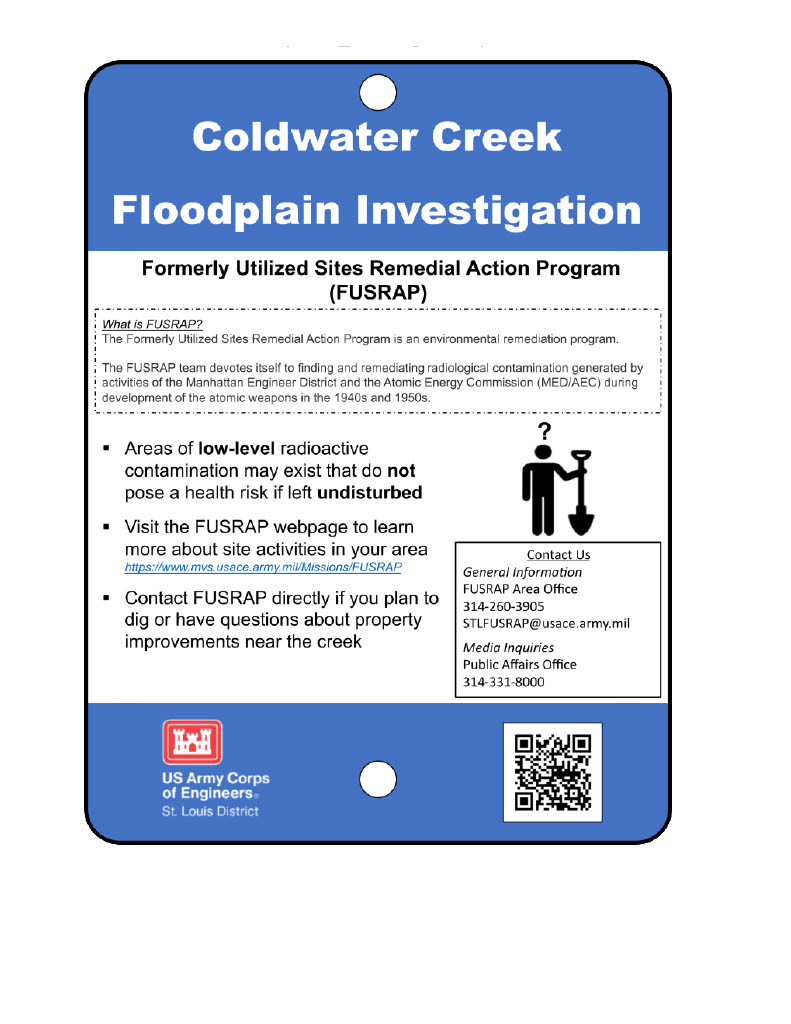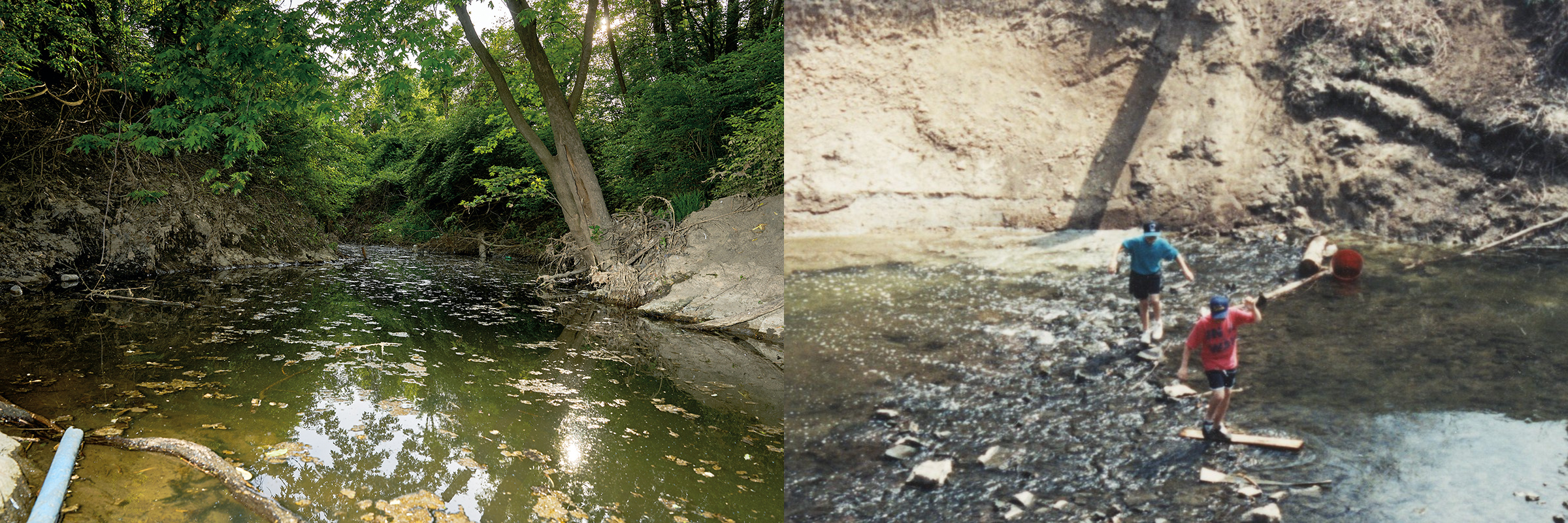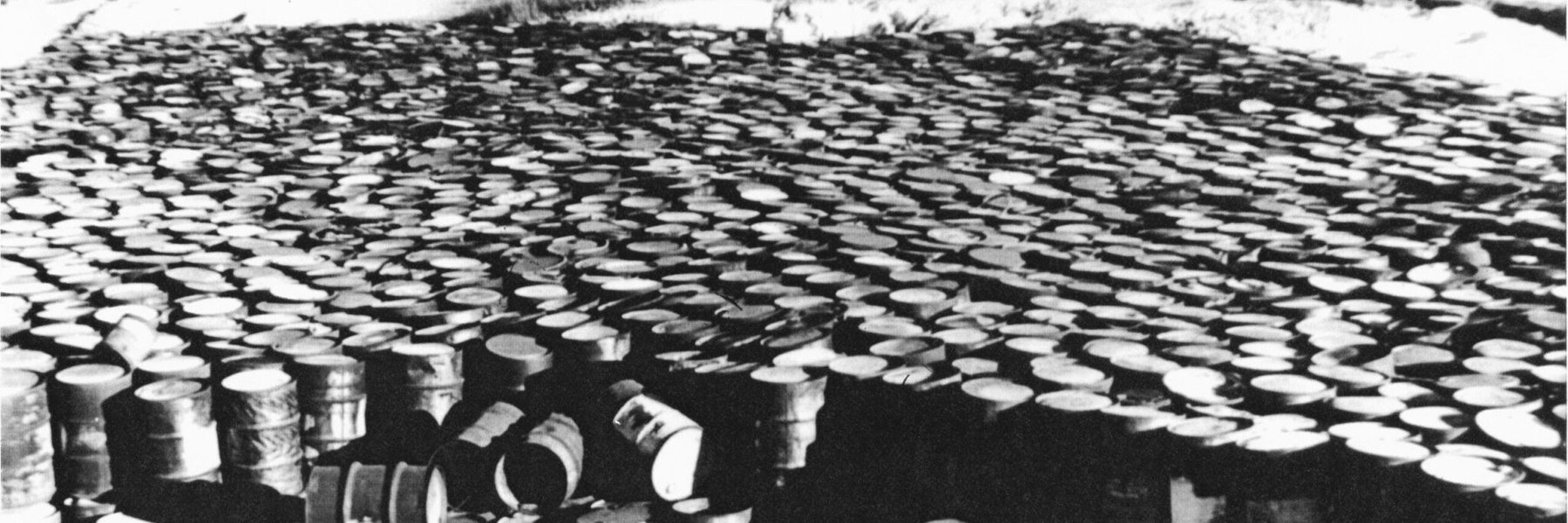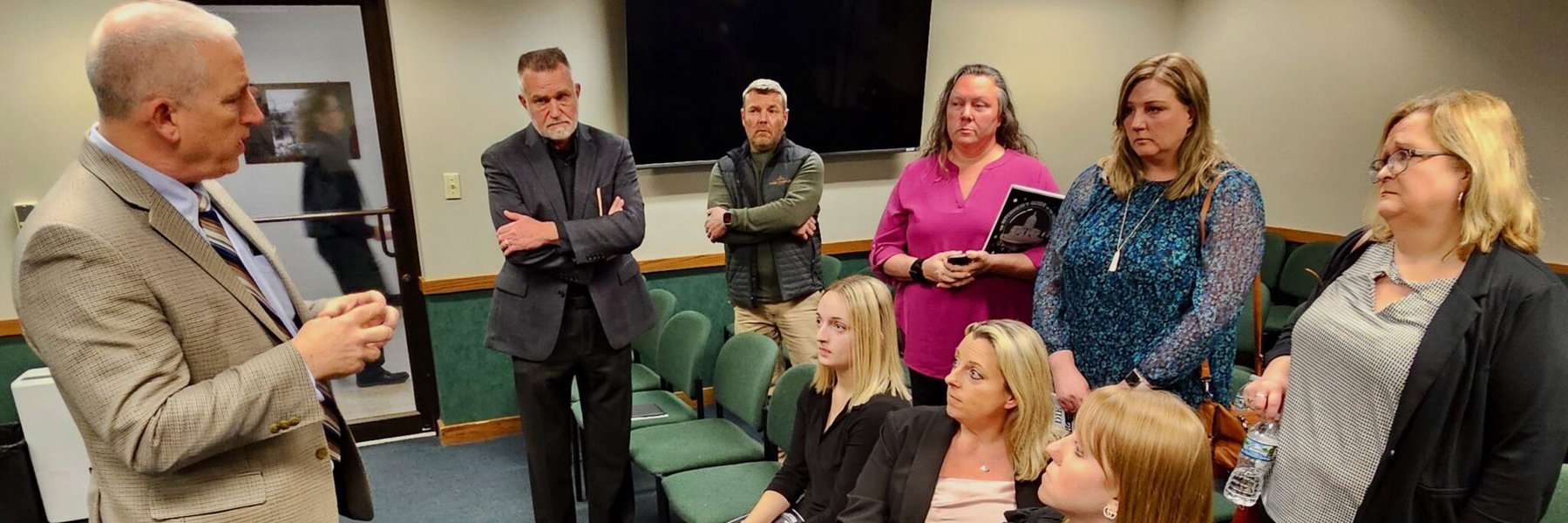More than 70 years after workers first realized barrels of radioactive waste risked contaminating Coldwater Creek, the federal government has started work to put up signs warning residents.
The U.S. Army Corps of Engineers said in a statement Monday that it was working with the Environmental Protection Agency to add signs along the creek to help it monitor areas “that may pose a risk if disturbed.”
Coldwater Creek has been contaminated for decades with radioactive waste left over from the World War II-era effort to build an atomic bomb. But though the creek winds through some of St. Louis’ busiest suburbs and past public parks and schools, the federal government had resisted calls to post signs warning visitors of the contamination.
“This is decades of potential exposure that could have been prevented that they drug their feet on,” said Dawn Chapman, co-founder of Just Moms STL, an organization formed to advocate for communities affected by St. Louis-area radioactive waste.
Despite the delays, Chapman said she’s thankful that the signs are finally going to be installed.
The St. Louis area has long struggled with a radioactive waste problem. Uranium for the Manhattan Project, the name given to the effort to develop the first atomic bomb, was refined in downtown St. Louis.
After World War II, radioactive waste left over from those efforts was trucked to the St. Louis airport and dumped — some on the open ground and some in barrels — next to Coldwater Creek. As early as 1949, Mallinckrodt Chemical Works, the company that refined uranium for the federal government, was aware the waste could escape deteriorating barrels and enter the creek.
The waste was later sold and moved to a property in Hazelwood where it once again sat in the open next to Coldwater Creek. In the 1970s, the remaining waste that couldn’t be processed to extract valuable metals was transported to the West Lake Landfill in Bridgeton and dumped there illegally. It’s still there today.
Coldwater Creek is expected to be cleaned up by 2038 — 89 years after Mallinckrodt realized the waste could pose a risk to the creek.
![An undated photo from the 1980s, of a child swinging from a rope into Coldwater Creek. The photo is from a scrapbook kept by Sandy Delcoure, who lived on Willow Creek in Florissant and donated the scrapbook to the Kay Drey Mallinckrodt Collection. Only one of the photographs from the scrapbook includes any information, which read: “Willow Creek children on Cold Water [sic] Creek. We can’t keep the children away from the creek. The only alternative is to get it cleaned up.” (State Historical Society of Missouri, Kay Drey Mallinckrodt Collection, 1943-2006.)](https://cdn.muckrock.com/news_photos/2023/07/11/Archive-01.jpg)
U.S. Rep. Cori Bush, whose district includes all of St. Louis City and much of northern St. Louis County, introduced legislation in 2022 that would have required the Army Corps to install signs around Coldwater Creek. In a statement Monday, Bush said she was proud her office was working with the Army Corps and EPA to get the signs posted.
“North County residents have been unknowingly living and raising their families amongst radioactive contamination dumped by the federal government for years,” Bush said.
Bush said the community deserves to be “made whole,” which starts by “ensuring residents are aware of the existence of any environmental harms in our own backyard.”
While the Army Corps, which has overseen the sites since the late 1990s, said the remaining contaminated sites surrounding Coldwater Creek only pose a risk if they’re disturbed, in previous decades exposure to the creek’s waters may have raised the risk of cancer for St. Louis residents.
The Agency for Toxic Substances and Disease Registry concluded in 2019 that children and adults who played in or near Coldwater Creek or lived in its floodplain between the 1960s and 1990s may have been exposed to radioactive materials that raise the risk of certain cancers. The agency — part of the Centers for Disease Control and Prevention — recommended signs be placed along the creek to warn residents of the potential exposure risk.
According to the St. Louis Post-Dispatch, the Army Corps said at the time doing so wasn’t its role.
The Army Corps said there was nothing specific that caused the agency to change its mind on installing signs. The decision was “driven by our commitment to continuous improvement,” George Stringham, a spokesman for the Army Corps, said in an email.
Stringham said the Army Corps would “continue to prioritize the health and safety of the community.”

“We are adding signage to help inform the community and let them know where to go to for accurate information as well as provide a resource for anyone that needs to dig in areas near Coldwater Creek that may need support from our office,” Stringham said.
The Army Corps doesn’t yet have details to share regarding the number of signs and locations along the creek where they would be posted.
The EPA said the decision to add the signs “does not reflect a new or increased level of concern about the human health risk.”
The announcement comes at a time of renewed focus on St. Louis’ radioactive waste problem. Bush and U.S. Sen. Josh Hawley have sought compensation for residents sickened because of exposure to radioactive waste, and an investigation by The Missouri Independent, MuckRock and The Associated Press found that private companies and government agencies downplayed the risks associated with the contamination for decades .
Andy Quinones, senior communications manager for the city of Florissant, said the Army Corps had requested to put signs in several of the city’s parks that sit along the creek.
“I’m glad,” Quinones said, “that they are taking the initiative to start doing a better job of informing the public.”
Photo Credits: Theo Welling/Riverfront Times and the State Historical Society of Missouri, Kay Drey Mallinckrodt Collection, 1943-2006.




